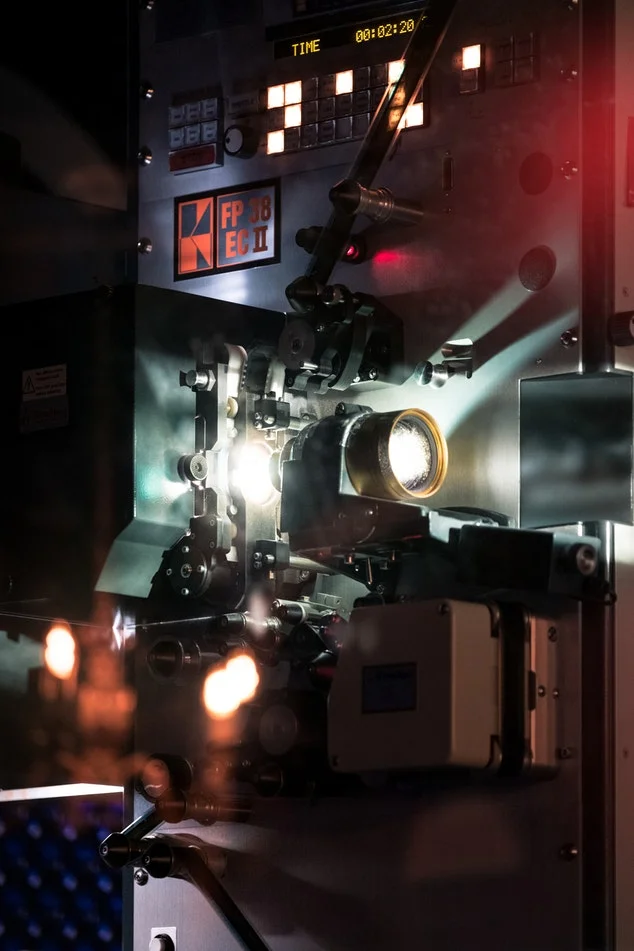Dialogue editing is an essential part of the post-production process for animated TV shows, and one we take very seriously at Boom Box Post! Clear, crisp, organized, and coherent dialogue is the bedrock of any TV show. Meticulously shaping, enhancing, and cleaning up the voice performances does wonders to breathe life into the characters as well as streamline the mixing process.
Viewing entries in
Learn About Sound
A common practice I see among newer editors is cutting directly from a sound effects library, and leaving it at that. Depending on what your library is like, that’s not always a bad thing. Some libraries are putting out some incredible content right now, and sometimes you find exactly what you’re looking for. However, the plop-and-drop method of cutting sound effects doesn’t always get the job done. A lot of projects call for a more custom sound palette than what you’d already find sitting in a library. Certain scenes, certain moments, sometimes even full series or projects call for a more specific, bespoke approach.
A radioplay is a vital step exclusive to the animation pipeline; however, there is a lot more to the process than simply editing one together. In this post we outlines the basics of a radioplay and their importance in the production workflow.
One of the biggest challenges in sound design is creating unique and beautiful design work that will work with the musical score rather than against it. Because television schedules are tight, composers often need absolutely every moment they can get, and the music goes directly to the mix stage without the sound design team ever hearing it. In a dream world, we would be constantly collaborating with the composers and music departments. But unfortunately, we’re often on two secluded islands, trying to create something fantastic on our own, and just hoping that it will work when it’s all put together in the mix.
As I get more and more experience as the re-recording mixer, I’ve come to intuitively understand what will work and what will never work in a sound design build once the music is added, no matter how cool it sounds in the sound effects preview.
The key to designing sound that will work flawlessly with any musical score hinges greatly on the use of inharmonic elements rather than harmonic ones. But to understand what will work and when, we need to dive deep into the concept of harmonic versus inharmonic elements.
Whether you’re mixing for film in 5.1 surround or Dolby Atmos, it’s important to consider a key element of human auditory perception: localization. Localization is the process by which we identify the source of a sound. We may not realize it, but each time we sit down to watch a movie or TV-show, our brains are keeping track of where the sound elements are coming from or headed towards, like spaceships flying overhead, or an army of horses charging in the distance. It is part of the mixer’s role to blend the auditory environment of a show so that listeners can accurately process the location of sounds without distraction or confusion. Here are some psycho-acoustical cues to consider when mixing spatial audio.
I remember the first time I was on a mix stage, the mixer broke out this software tool that made it look like we were about to decode The Matrix. There were grainy shades of orange in crazy designs. What was I looking at?!?
That tool was the Spectral Repair module from Izotope RX and it’s a modern marvel.
As a mixer, I see all kinds of issues cropping up that originated in sound editorial. And with my background in sound editorial, I’ve surely committed every one of them myself at some point. Here’s a list of some common problems we see on the mix stage. Avoiding these problems will not only make your work easier to handle and more professionally presented, it will hopefully save you a snarky email or comment from a mixer!
We’ve all been there. Upon starting a new project you’re told “picture is locked” which means there will be no further edits resulting in timing changes. Projects that stick to this promise are a dream. However, the reality of creative work is that it’s ever-evolving; and that includes picture editorial. Timing changes are inevitable, but they don’t have to be dreaded. With the right process, conforming to new picture can be relatively painless.
At the very beginning of 2020, Women’s Audio Mission reached out to me to ask if Boom Box Post would be interested in contributing to their upcoming Los Angeles popup by giving a workshop on sound design for television and film. We decided to put together a small event in May for 15-30 people which would introduce the audience to sound design and include some hands-on interactive components.
And then… COVID hit and it seemed that this plan to collaborate would need to be put off indefinitely due to travel, health, and safety concerns.
But, WAM being the incredible resource that it is for so many people in our industry, they quickly pivoted and created WAM Everywhere Live Classes, a series of free virtual workshops “to keep our community connected, supported, and learning during this time of social distancing and beyond.”
A little over a month ago colleges across the country held virtual commencement ceremonies for the graduating class of 2020. If you were one of the many to graduate during this turbulent time you may be asking yourself, “What do I do now?” Here are some steps you can take right now to prepare yourself and help with your future job search!
The day-to-day tasks of a Studio Manager are vast and encompass a handful of responsibilities. Although the job is likely to vary depending on the studio, I want to provide some insight to what I do as Boom Box Post’s Studio Manager.
At lunch the other day, a conversation about minimalism in the Oscar nominated film 1917’s sound design sparked a memory from a few months ago. So let’s take it back to summer 2019... and then I promise we’ll loop back around to 1917.
One of the most challenging sequences a sound editor can face is a car chase. Vehicles are tough. Even the most experienced designer can hit a wall when trying to make them work. This is by no means a complete guide, however, this primer should prove helpful for those looking to dip their toes into the wild world of vehicle sound editorial.
As sound editors, speaking about sound design with clients requires a kind of foreign language. I often find myself making silly noises in an effort to either interpret what a client is looking for or to pitch an idea of my own. There’s a shorthand however, that both editor and filmmaker are aware of. An entire language has been laid out for us in the incredible work of sound designers past. I’m talking about films that are ‘in the canon’ for having memorable sound design moments.
We have sound editors coming in to test for us on a regular basis. The single most common difference between an editor who has worked largely alone versus one that has worked within a sound team is the lack of knowledge when it comes to the basics. There are three concepts I consider essential that I ask edit testers about right off the bat: Perspective Cutting, Stair Stepping, Color Coding. I can learn a lot about their familiarity with these concepts based on their response. Even a slight hesitance to answer is a dead giveaway; you’ve only worked alone and without much direction.
Earlier this year, the team from The Loud House approached us with a brand new short designed as a 360° video for YouTube. Never having worked in this format, I did some searching and was surprised at how little information had been published on sound for spatialized video. After working it out for myself, I thought I’d share the details with our readers as a jumping off point should a project like this come across your desk.
We open on wide shot of a forest. A river runs in the distance. Not far from the river, emerging from the trees is a bloodied man in a torn business suit, limping and desperate for water. Cut to an over the shoulder shot of him staring at the river. Cut again and the camera is right on the water as he leans in for a drink. The focus (for our purposes) isn’t the man or his torn and blood soaked suit (I just added that for some flair). From a sound editorial standpoint, the complicated element here is the river. It’s far off in the distance, now it’s close to us, now it’s full frame in an extreme close up. As a viewer, the camera is our proxy here. Wherever the camera sits, so do we. And so, as the perspective of the camera changes so does our perception.
Go behind the scenes of the Mutant Apocalypse arc of Nickelodeon’s CG Animated Teenage Mutant Ninja Turtles series with this story of how Boom Box Post created the sound of the post apocalyptic Shellraiser vehicle by custom recording Executive Producer Ciro Nieli’s vintage Mustang.
Here at Boom Box Post we have an extensive intern curriculum where our interns have to complete several different projects as part of their program. The projects include everything from sound editing basics, to pre-dubbing and from-scratch design work. In the project I teach, we come across many real-world sound editing scenarios, including a small clip in slow motion. Slo-Mo is a storytelling tool that sound editors come across quite often, and it is where I get the most questions regarding, “How do I cut this?”
Because slow motion is more conceptual than it is technical, there is no right way to approach it. However, there are some basics that you are going to want to cover, and I thought this would be a great opportunity to illustrate various sound concepts while editing scenes in slow motion. Every scene and scenario has it’s own set of challenges, but these tips are a great place to start.
When Plugin Alliance asked me to try out Unfiltered Audio's newest plugin, SpecOps, before it was released to the public, I was excited. I love having the opportunity to try out new sound design tools and maybe even give valuable feedback to the maker pre-release.
So, I began, as I always do, by reading the manual. You may prefer to watch a YouTube user video, or read a blog post (hopefully, like this one!), but I’ve always been a manual gal. I love to know every last detail about how to use a new piece of software before I try it out.
Well, this manual’s first sentence is “SpecOps is the ultimate spectral processor.”
Bold statement, right? I was a bit skeptical. I like my manuals to be fact-based, and this seemed like a pretty hyped up opinion. But, after digging into it, I can honestly say that it stands up to the hype. It is the ultimate!





















